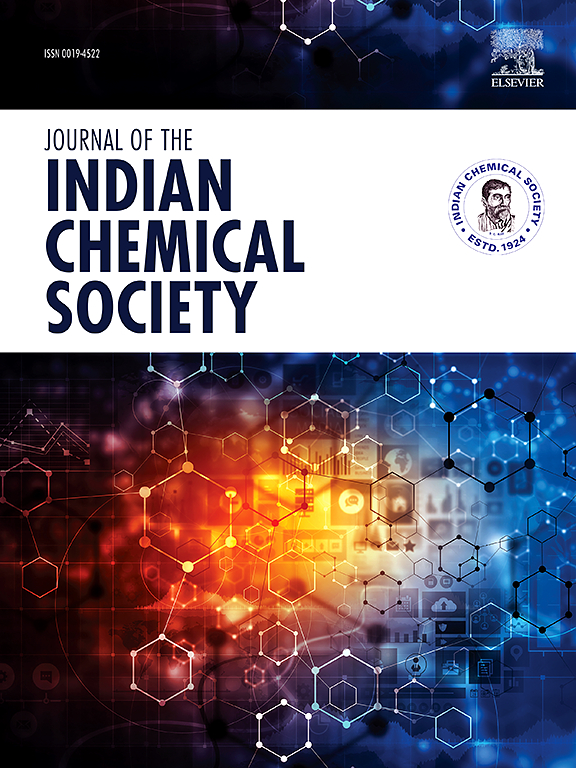rGO/ZnO modified polyaniline hybrid ternary nanocomposite as highly sensitive electrode for Pb2+ detection in aqueous sources
IF 3.2
4区 化学
Q2 CHEMISTRY, MULTIDISCIPLINARY
引用次数: 0
Abstract
This research work demonstrates the effective determination of Pb2+ ions from aqueous sources using systematically developed ternary nanocomposites (PrGZs). These nanocomposites were synthesized through a judicious combination of Polyaniline (PANI), reduced Graphene Oxide (rGO), and Zinc Oxide (ZnO). The physical properties of PrGZs were characterized using techniques such as Fourier Transform Infrared Spectroscopy (FTIR), X-ray Diffraction (XRD), Thermogravimetric Analysis (TGA), Differential Scanning Calorimetry (DSC), and Scanning Electron Microscopy (SEM). The electrochemical performance of PrGZs was evaluated using Electrochemical Impedance Spectroscopy (EIS) and Differential Pulse Anodic Stripping Voltammetry (DPASV) with a carbon paste electrode (CPE). Notably, PrGZ-2 exhibited significantly improved detection and sensitivity compared to the individual components and binary composite, attributed to its low resistance, pseudo-capacitive behaviour, and enhanced electron transfer properties. The calculated limits of detection (LOD) and quantification (LOQ) for PrGZ-2 were 0.3 μM and 1.16 μM, respectively, within a Pb2+ ion concentration range of 1 μM–5.5 μM. This indicates good sensitivity for low concentration detection, with an R2 value of 0.994. The relative standard deviation (RSD) for PrGZ-2 was 2.13 %, confirming acceptable repeatability and precision of the measurements on the working electrode at a scan rate of 0.01 V/s. Furthermore, the composite material displayed good results in the presence of interfering metals and demonstrated appreciable repeatability and stability. These findings suggest that the material holds significant potential and could be evaluated for detecting other toxic heavy metals, expanding its application for environmental monitoring without interference from lead.

求助全文
约1分钟内获得全文
求助全文
来源期刊
CiteScore
3.50
自引率
7.70%
发文量
492
审稿时长
3-8 weeks
期刊介绍:
The Journal of the Indian Chemical Society publishes original, fundamental, theorical, experimental research work of highest quality in all areas of chemistry, biochemistry, medicinal chemistry, electrochemistry, agrochemistry, chemical engineering and technology, food chemistry, environmental chemistry, etc.

 求助内容:
求助内容: 应助结果提醒方式:
应助结果提醒方式:


